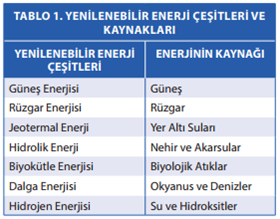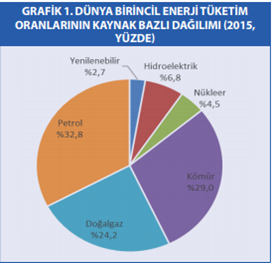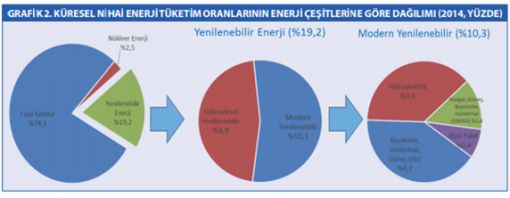Renewable Energy in Turkey and in the World
After the first oil crisis in 1973, all countries have become better aware of the importance of energy. After that date, countries took substantial steps for diversifying their energy sources and increasing their use of alternative energy sources; in particular, energy importers sought policies to support sustainable energy use. By 2000s, the efforts aimed at alternative energy gained great momentum and the number of studies into renewable energy began growing.
Renewable energy can be defined as “a source of energy which can be derived from natural sources and replenished infinitely.” The main characteristics which distinguishes renewable energy from other types of energy is that it can be naturally replenished and it will not vanish. Moreover, renewable energy forms are highly important in that they reduce carbon emissions harmful to the environment, and they don’t need importing as they are an indigenous resource, reducing dependency on exports.
Renewable energy sources are mainly grouped under “solar,” “wind,” “geothermal,” “hydrolic,” “biomass,” “tidal” and “hydrogen” power. Notably, sun is the main source of most of these energy forms, affecting them directly or indirectly. In fact, even fossil fuels such as coal, oil and natural gas are actually a transformed form of solar energy. Therefore, sun can be defined as the most important energy source for earth. The types of renewable energy and their sources are listed below (Table 1).

Although renewable energy sources have such an enormous potential, oil ranks in first place among types of energy consumed in the world, followed by coal and natural gas, in this order. The share of renewable energy in total primary energy consumption3 is merely 9.5 percent (total of hydropower and renewable) (Figure 1).

Investments in renewable energy and technological advances are driving up the consumption rate of renewable, or “clean” energy. In this context, the share of renewable energy worldwide is expected to be 20-21% by yearend 2016, and grow even further by 2020.
Approximately, 9 percent of total renewable energy use worldwide is from biomass use, in other words conventional means of cooking and heating, and 10.3 percent is from modern renewable sources of energy (Figure 2).

As of 2014, the share of renewable energy in global final energy consumption was 19.2 percent, which continued rising in 2015 and 2016 to above 20 percent. The share of fossil fuels in final consumption is approximately 79 percent, and nuclear energy approximately has a 2.5 percent share (Figure 2). This shows that about a fifth of the energy consumed in the world is covered from renewable sources. On the other hand, fossil fuels have a very large share of total energy consumption. Despite very high dependency of the world on fossil fuels, recently renewable energy sources, including biomass, geothermal, solar, wind, hydropower and biofuels, began supplying approximately 10 percent of total energy use. And looking at the share of modern forms of renewable energy in final energy consumption, we can see that renewable energy used for heating ranks first with 4.2 percent, and hydropower ranks second with 3.9 percent.




